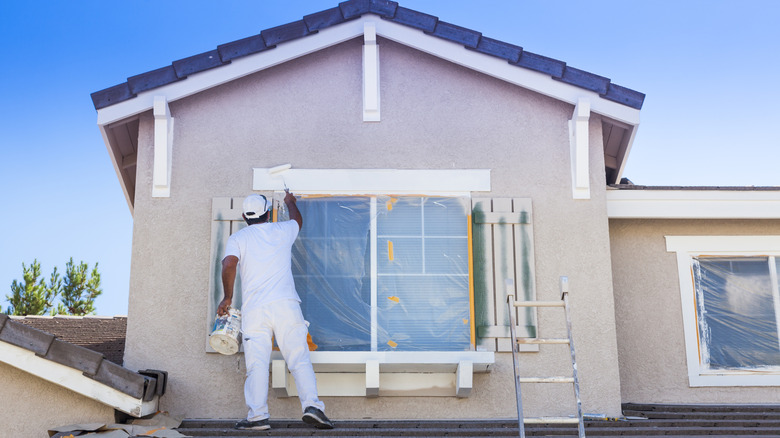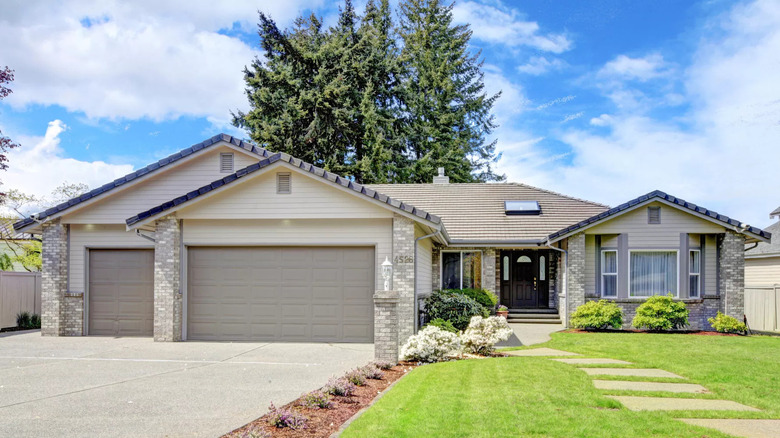Everything You Should Know About Using Rhino Shield Paint For Your Home's Exterior
Rhino Shield: Even the name sounds tough. But, before you jump on the phone and call the contractor about using it for your home's exterior, there are a few things you should ask yourself, such as, why is it so expensive? Can you apply it yourself? And does Rhino Shield work as well as the company says it should? It's time to take a closer look.
Rhino Shield is often mistakenly called paint. The company is keen to point out that it's actually a ceramic elastomeric coating. It is much thicker than standard latex paint and moves with the building during changes in temperature and humidity across the seasons, so it doesn't crack, peel, or flake off. This dramatically improves durability and makes Rhino Shield an attractive option for those who wonder how often they need to repaint the exterior of their home. The company is so confident of its long-lasting product that they provide a 25-year warranty, and it can even transfer to the new owner if the house is sold. It also has a Class "A" fire and smoke rating, the highest available. It is claimed that in some areas at risk of wildfires, this may qualify for a discount on homeowner insurance. That being said, here's everything you should know before using Rhino Shield to paint your home's exterior.
Rhino Shield application -- not for amateurs
Rhino Shield can only be applied by approved, company-trained contractors. This has its pros and cons. On the plus side, you shouldn't make any of the common mistakes when choosing exterior paint. Also, if you have questions before hiring a painter, a professional can talk through them with you. On the minus side, it does add to the cost of what is already a premium-priced product; the company says the careful, multi-stage preparation and application process and the thickness of the product contribute to this. They argue that Rhino Shield is actually economical over time because there's no need to repaint every 5 to 10 years.
According to Rhino Shield, the coating can be applied to brick, block, metal, stucco, wood, and vinyl, so it's usually okay over siding. It is not recommended for log cabins. Rhino Shield can be tinted to virtually any color. When we researched customer feedback to try to find out whether Rhino Shield was worth the money, we got mixed responses. Apparently, it may fade over time, but doesn't crack or peel. Some wood siding can be problematic. There have occasionally been complaints about individual dealers. These are independent businesses, not owned by Rhino Shield, so it's important to carry out your due diligence and satisfy yourself of their credentials before agreeing to a contract.

